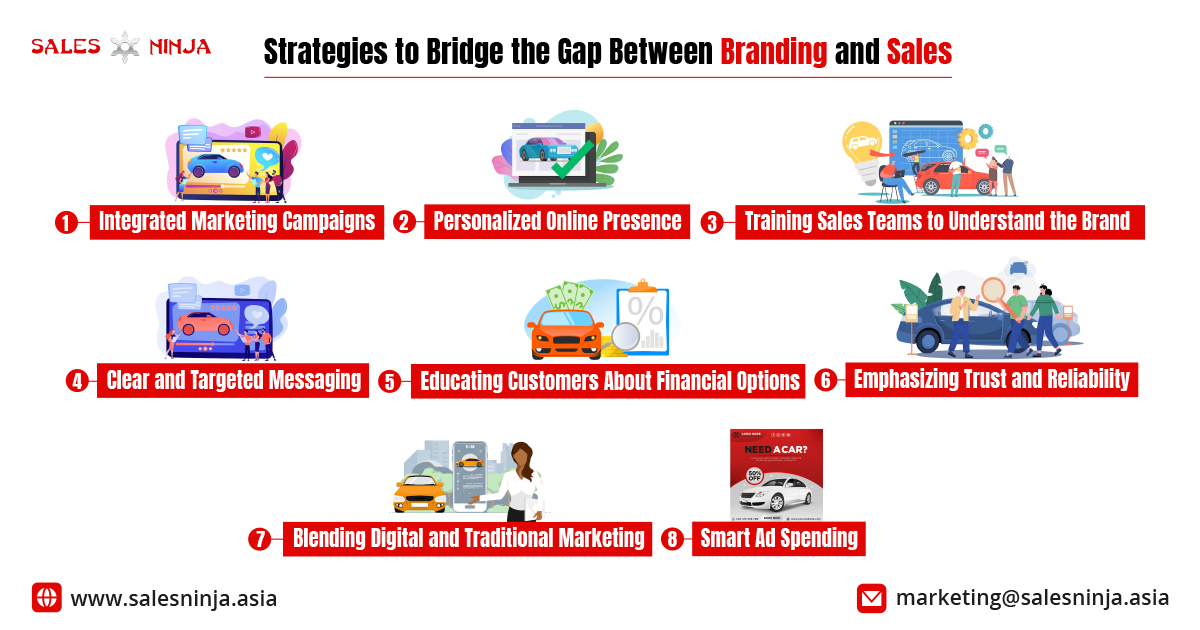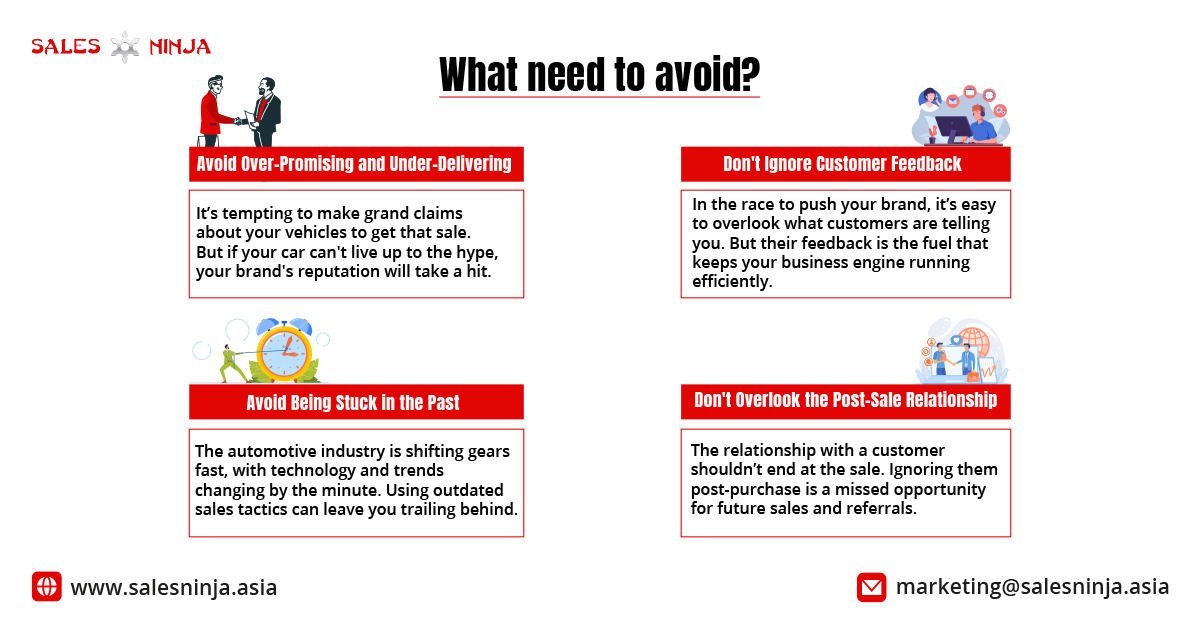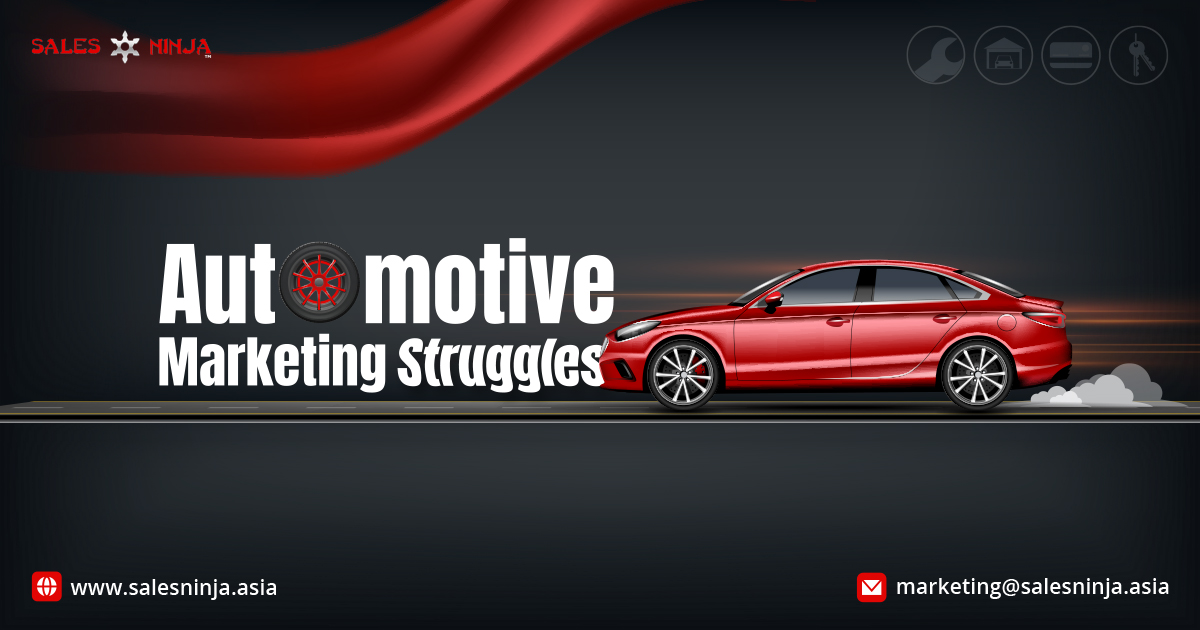Automotive marketing in today’s fast-paced industry poses a significant challenge for brands trying to connect their branding efforts with sales results. The thin line between building a strong brand image and converting it into tangible sales can be a complicated journey. This article dives deep into the struggles faced by automotive marketers in bridging this gap and provides insights on how to overcome these challenges successfully.
Understanding the gap between branding and sales in automotive marketing

Automotive marketing has always been a complex field, with the challenge of effectively bridging the gap between branding efforts and actual sales. While building a strong brand presence is crucial for long-term success, the ultimate goal is to convert this brand equity into tangible sales. However, there are some gaps and the gap between branding and sales in automotive marketing is significant, and there are a number of factors that contribute to this. Let’s try to understand:
-
Branding vs. Sales Focus
Branding takes a lot of effort and cash, and it’s not a quick fix. Because of this, many marketers end up caring more about making quick sales than building the brand for the long haul. This means they often put selling cars right now over making the brand strong and well-known over time.
-
Customer Research Habits
Car buyers do their homework. Recent data from Autotrader indicates that 72% of consumers who bought cars in 2020 conducted online research before purchasing. That means consumers look up different brands and compare features way before they walk into a showroom. So, if your brand isn’t showing up strong online and on other channels, it’s tough to get noticed, especially next to your competition who might be doing it better.
-
Understanding Buyer Behavior
There’s a gap between what car companies think will happen and what really goes down at the dealerships. They’re missing the mark on what makes customers actually buy, leading to lost sales because the sales team wasn’t ready to seal the deal right then and there.
-
Confusing Messages
If the messages from car brands aren’t clear or are too broad, they can leave customers scratching their heads instead of reaching for their wallets. This means some car models just won’t sell well because customers can’t connect with the message.
-
Financing and Leasing Awareness
While a ton of money goes into flashy ads, not enough is spent on teaching people about car financing or leasing options. This means customers might not even know about these choices, which can help make a car more affordable for them.
-
Misdirected Ad Spending
Sometimes, the money spent on big ad campaigns doesn’t hit the right people. It’s like aiming for a dartboard and hitting the wall. This means they’re not reaching the folks who are most likely to buy a car, and that’s money that could’ve been used better elsewhere.
Strategies to Bridge the Gap Between Branding and Sales
Bridging the branding and sales gap means getting smart about how you show off your cars and making sure you’re talking to the right people, in the right way, at the right time. It’s about making the brand shine in a way that leads straight to the sale. So, here are some strategies for how automakers strike a balance between their branding efforts and sales goals:

-
Integrated Automotive Marketing Campaigns
First things first, car companies need to sync their branding efforts with their sales goals. This means creating marketing campaigns that not only look good but also speak directly to what buyers want. For example, if a car brand is known for safety, its ads should highlight features like automatic emergency braking and lane-keeping assist. This way, when customers do their research, they’ll find that the brand’s reputation matches the actual features of the cars.
-
Personalized Online Presence
We all know people are online a lot these days, comparing this and that before buying. So, car brands need to make sure they show up in those searches with personalized content. Personalized marketing, driven by data insights, can significantly enhance the connection between branding and sales. For example, if a customer is looking up family-friendly SUVs, a car company can use online tools to make sure ads for their safest, roomiest SUVs pop up in those searches. It’s like having a billboard right in their digital neighborhood.
-
Training Sales Teams to Understand the Brand
Sales teams at dealerships should be like walking, talking brand encyclopedias. They need to be ready to chat about what makes their cars stand out the minute a potential buyer walks through the door. If a brand is all about eco-friendliness, every salesperson should be able to talk about fuel efficiency and low emissions as easily as they breathe.
-
Clear and Targeted Messaging
Nobody likes confusing car ads that don’t make sense. Car companies need to keep their messages clear. Experts believe that a strong alignment between branding and sales can be achieved through the strategic implementation of IMC (Integrated Marketing Communication) principles. A cohesive messaging approach across various marketing channels helps bridge the branding-sales gap by ensuring consistent brand positioning and effective communication throughout the customer journey.
If they’re selling a sports car, they should talk about performance and the thrill of the drive, not just show a car sitting pretty in a driveway. It’s like telling a story that gets the buyer excited to see themselves in the driver’s seat. -
Educating Customers About Financial Options
Dealerships should have clear info available about financing and leasing right where customers can see it—on their websites, in the showroom, everywhere. Maybe even short explainer videos that break down the nitty-gritty into easy-to-understand bits. It’s like giving customers the GPS they need to navigate the financial side of buying a car.
-
Emphasizing Trust and Reliability
According to a study by KPMG, 55% of automotive consumers prefer to purchase vehicles from brands they trust. Building trust through transparent and reliable communication is therefore crucial in closing the gap between branding and sales. This can be achieved by showcasing real-world experiences, emphasizing safety features, and partnering with reputable third-party organizations for validation.
-
Blending Digital and Traditional Marketing
Digital marketing undoubtedly reigns supreme in today’s landscape, capturing the attention of the connected consumer with precision targeting and real-time engagement. Yet, the enduring impact of traditional advertising avenues — from the persuasive power of radio commercials that accompany listeners on their drives to the commanding presence of billboards that stand tall along bustling highways — cannot be dismissed.
This integrated marketing approach is not about choosing one over the other; it’s about crafting a symphony of touchpoints that resonate across generational divides and technological preferences. It’s recognizing that while some audiences may be perennial inhabitants of the digital realm, others still find comfort and familiarity in the classic mediums that have shaped consumer behavior for decades.
Simply, it’s about mixing the best of both worlds to reach everyone, no matter where they are or what they’re doing. -
Smart Ad Spending
And lastly, it’s all about spending that ad money wisely. Car brands should use data analytics to figure out who’s buying their cars and then target those people directly. It’s like using a laser pointer instead of a flashlight to find your keys. You’re going straight for the target without wasting time or money.
What need to avoid?
For entrepreneurs in the automotive industry looking to rev up their sales and brand identity. Steering clear of certain pitfalls is just as crucial as accelerating down the right path. Let’s break down what to avoid and some pro tips to keep things rolling smoothly:

-
Avoid Over-Promising and Under-Delivering
It’s tempting to make grand claims about your vehicles to get that sale. But if your car can’t live up to the hype, your brand’s reputation will take a hit.
-
Don’t Ignore Customer Feedback
In the race to push your brand, it’s easy to overlook what customers are telling you. But their feedback is the fuel that keeps your business engine running efficiently. So, actively solicit and listen to customer feedback. Use it to fine-tune your products and services.
-
Avoid Being Stuck in the Past
The automotive industry is shifting gears fast, with technology and trends changing by the minute. Using outdated sales tactics can leave you trailing behind. Stay abreast of industry trends and be ready to adapt your sales strategies. Embrace innovation, whether it’s in-car features or sales techniques.
-
Don’t Overlook the Post-Sale Relationship
The relationship with a customer shouldn’t end at the sale. Ignoring them post-purchase is a missed opportunity for future sales and referrals.
🛠 Tip: Develop a robust post-sale follow-up process. Keep in touch with customers through service reminders, newsletters, and personalized offers.
For the automotive industry to keep pace with the ever-evolving market demands and consumer expectations. It must adapt and innovate continuously. When companies balance this equation correctly, they achieve not only better results but also build a loyal customer. Base that values their brand as much as the products they purchase.
The successful integration of branding with sales ensures a symbiotic growth that benefits both the company and its customers. Driving towards a future where every marketing effort counts and every sale matters.




